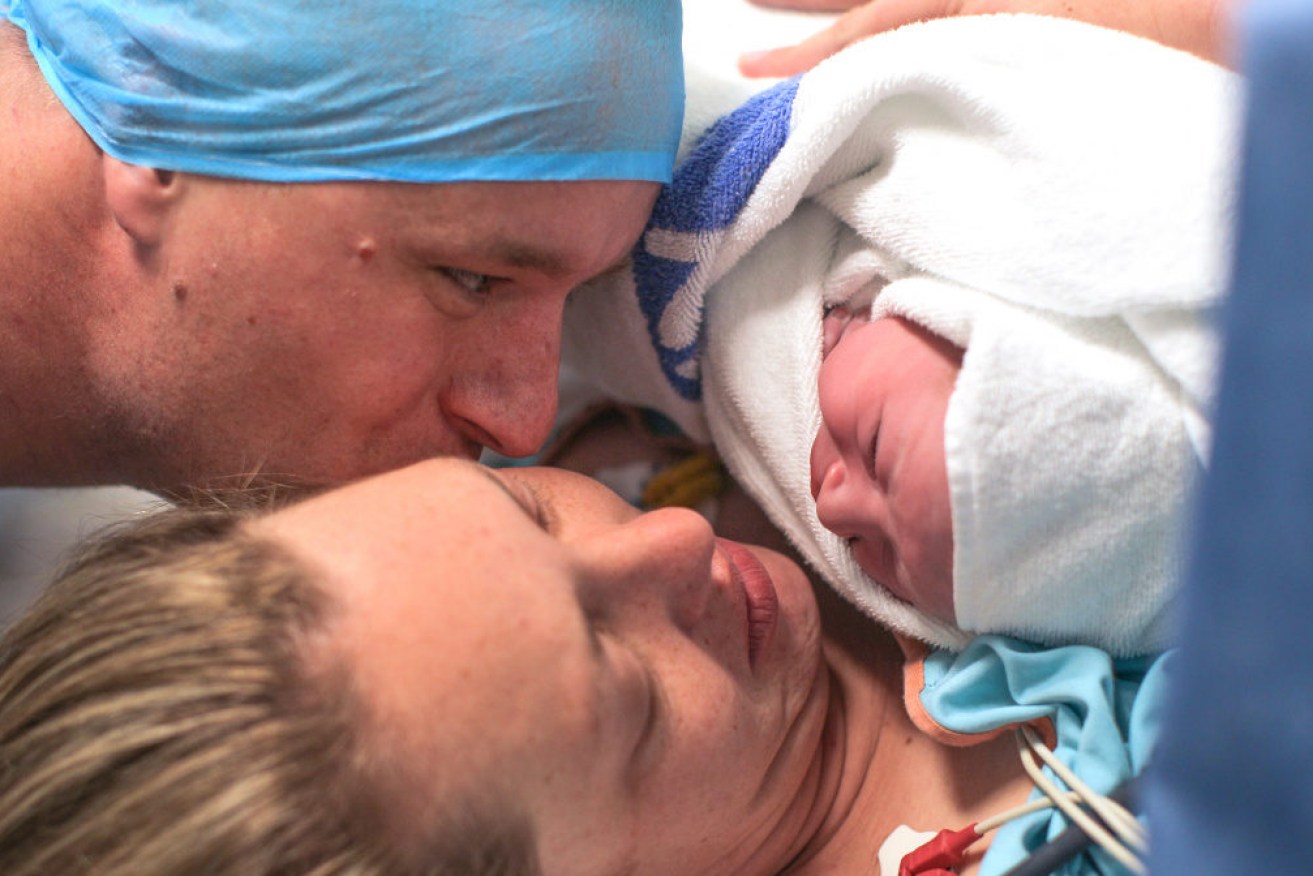How should new mums’ visitors be managed in the age of COVID? It’s complicated


Restrictions were especially emotional for women during childbirth, as having their chosen support person on hand during childbirth is a "big deal". Photo: Getty
The rules related to supporting women during childbirth and subsequent visitation in Australia’s current coronavirus epicentre were a matter of confusion this week.
It was resolved by assurances to Victorians that there is no limit to how long a woman’s partner or support person can stay with a woman following childbirth.
On subsequent days, post-delivery, visits are confined to one person for two hours.
As the state’s Health Minister Jenny Mikakos said at a press conference on Thursday: “We have tried to strike the balance there between compassion and safety.”
But is it the right way to go?
Dr Kate Kerridge, a Brisbane-based obstetrician and gynaecologist, said there are no easy answers, and plenty of conflicting factors.
Dr Kerridge told The New Daily that the initial, incorrect announcement –that partners or support people would be limited to remaining with the birthing mother for two hours following delivery – would have been “frightening” to many women.

Obstetrician Kate Kerridge says that having visitors coming back and forth to a maternity ward may make the risk of COVID infection worse. Photo: For Women.
“Obviously birth is a huge event, however you give birth, whether it’s vaginally or by caesarian section, it’s a really big deal who women have as their support person,” she said.
“Be it their mum, their sister, a friend, their partner or a mix of people, to have a small amount of time with your trusted person is frightening.”
She also said that obstetricians had been “worried significantly about the social impact it was going to have on pregnant women and their families. And was this going to lead to issues in labour and the early post-natal period?”
Dr Kerridge said there remained a problem with the protocols in allowing visitors to come and go – even if visits were confined to one person for two hours, there is still the risk of them “bringing in” an infection acquired from the community.
Maybe it’s better to have partners stay in hospital
”If one rogue case got through to a maternity ward, you’d imagine the dramas that that would cause,” Dr Kerridge said.
“So there’s a possibility that visitors coming and going makes it (the infection risk) worse.”

Partners may be better off bunking down in hospital. Photo: Getty
One solution, where possible, would be to have the partner or support person stay for the duration of in-patient care – and staying put until mother and baby are discharged.”
Aside from the question of infection, having a partner or support person on hand throughout the hospital stay could be of help to new mothers in the emotionally fragile age of COVID.
Already prone to the physiological phenomenon of “baby blues” – the emotional aftermath when pregnancy hormones crash around day three after birth – the pervasive COVID-related anxieties would be a source of extra stress.
But even this, Dr Kerridge noted, wasn’t a “perfect” solution. New mothers won’t be able to see their older children until they return home –which Dr Kerridge advises should happen as soon as possible.
“You can’t have everything, she said. “I think the absence of kids in hospitals is going to be around for a fair while. They’re the most difficult to control in terms of hygiene practices.”








